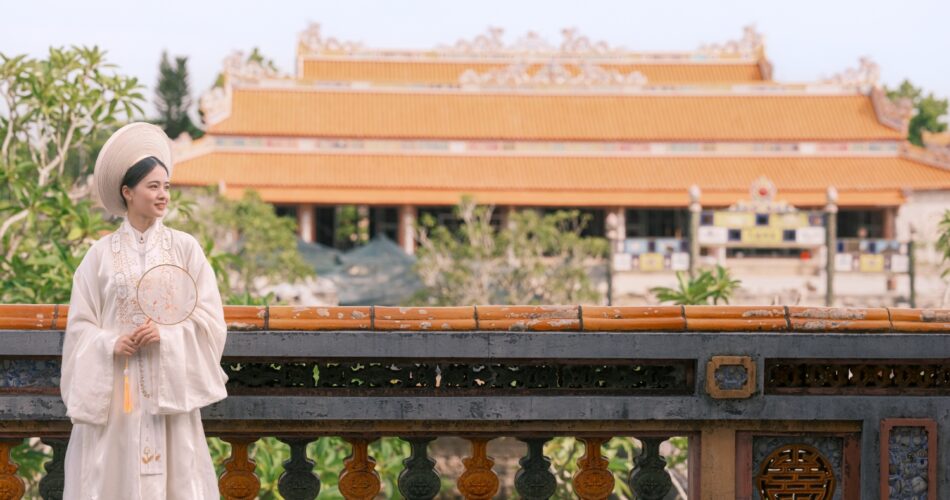The Imperial Citadel, located in the heart of Hue City, is the core of the Hue Monuments Complex and a symbol of the Nguyen Dynasty - Vietnam's last feudal dynasty. Constructed in the early 19th century, the Citadel encompasses the Imperial City and the Forbidden Purple City, which once served as the nation's political, cultural, and religious hub. Today, let's embark on a visual journey through the Imperial Citadel, guided by my photographs.
Location of the Hue Monuments Complex (Imperial Citadel): Google Map
The entrance fee to the Imperial Citadel (Hue Monuments Complex) is 200,000 VND per adult. To avoid wasting time queuing for tickets, you can purchase them online in advance. The ticket price will be cheaper if you choose to buy a combo package that includes other popular attractions in Hue, such as the tombs of Minh Mang, Tu Duc, and Khai Dinh. I've included a link to an online ticket vendor HERE to make it easier for you to find.

During my visit, I was fortunate enough to witness a reenactment of the Nam Giao Sacrifice Ceremony from 1924 (exactly 100 years ago).

Photos of the Nam Giao Sacrifice Ceremony at Ngo Mon Gate, Hue Imperial Citadel, in 1924 and 2024.

From the second floor of Ngo Mon, you can also capture a bird's-eye view of Thai Hoa Palace. This is where grand court sessions, coronations of Nguyen emperors, and receptions for foreign envoys were held.

The Thai Hoa Palace (Hall of Supreme Harmony) wasn't just the setting for grand ceremonies like coronations, the emperor's birthday celebrations, and the bi-monthly court assemblies; it also symbolized the absolute authority of the Nguyen emperors. This was a space that exuded solemnity, with its towering pillars, gleaming golden roof tiles, and imposing throne, where all mandarins and officials gathered to pay homage to the emperor and deliberate on matters of national importance.

The front of Ngo Mon Gate also offers numerous picturesque photo opportunities, so don't miss out!

After taking photos at Ngo Mon Gate, I explored the Hue Imperial City following the suggested sightseeing route below:


The The To Mieu (世祖廟), often referred to as The Mieu (世廟), is situated in the southwest corner of the Imperial City. It was dedicated to the Nguyen Dynasty emperors. This sacred space was where the court conducted ceremonies to honor deceased rulers. Women of the court, including the Empress, were not permitted to attend these rituals.

Next, I headed towards Kien Trung Palace, as Can Chanh Palace was under renovation. Along the way, I passed numerous gardens and smaller tombs, each with its own distinct architectural style. Let's take a look at some photos I captured on my way to Kien Trung Palace:
A photo I took of two close friends dressed in traditional Vietnamese attire. You can easily rent these outfits at shops around the Hue Imperial City for as little as 100,000 VND.
If you haven't found a shop to rent Ao Dai or Vietnamese traditional costumes yet, you can refer to the shop I rented from HERE.


After a 30-minute stroll through various gardens and smaller tombs, I arrived at Kien Trung Palace. Emperor Khai Dinh commissioned its construction between 1921 and 1923, coinciding with the building of his tomb. This palace served as the emperor's private residence within the Imperial City.


Inside Kien Trung Palace, you'll find a fascinating collection of artifacts once used by the emperors, along with historical photographs and documentary films that bring the palace's history to life. I highly recommend visiting in person to fully immerse yourself in this captivating experience.

You can purchase your tickets to the Imperial City online in advance to avoid long queues HERE.


After fully exploring Kien Trung Palace, I moved on to Co Ha Garden, the final stop on my journey through the Hue Imperial City.
On my way from Kien Trung Palace to Co Ha Garden, I stumbled upon a small temple with some picturesque corners that beckoned me to capture their beauty. I couldn't resist taking a few shots, hoping they would live up to my expectations.


Venturing inside, the scene unfolded just as I had envisioned. The small pavilion, overlooking the serene fish pond, created a perfectly framed and balanced picture. The lighting was also ideal for photography, casting a soft, ethereal glow upon the scene.

With my camera roll filled with captivating images of the temple, I made my way to Co Ha Garden.
The name "Co Ha" in ancient Vietnamese means "peace and tranquility amidst all matters." With this name, the Nguyen emperors built the garden primarily for the purpose of resting, strolling, and enjoying the scenery within the palace grounds after the hardships and busyness of court life.


This garden is truly vast and features a diverse array of meticulously arranged plants, creating an incredibly relaxing and pleasant atmosphere. It's undoubtedly one of my favorite spots within the Hue Imperial City.

At the far end of the garden, you'll find a small shop selling a variety of souvenirs from Hue's Imperial City. Don't forget to pick up a few trinkets for friends and family back home. Your purchase also contributes to the restoration and maintenance of this historical treasure!

And that concludes my exploration of the Imperial Citadel (Hue Imperial City). It's quite an expansive area, requiring a fair amount of walking between the various palaces (you might end up covering 5-10km on foot!). If you'd like to explore the entire complex but prefer not to walk such long distances, consider renting an electric car within the Citadel.

Thank you for reading! I hope this post has been helpful in planning your exploration of Hue.
Don't forget to Follow me on Instagram ( travel.w.minh_photo ) or Subscribe to receive notifications every time I have a new article.
***************************************************************************************************************
*** Please read the requirements carefully Copyright & Collaboration before copying or quoting Blog content and images. Thank you.









A useful article, with a lot of investment in images and information about Hue!